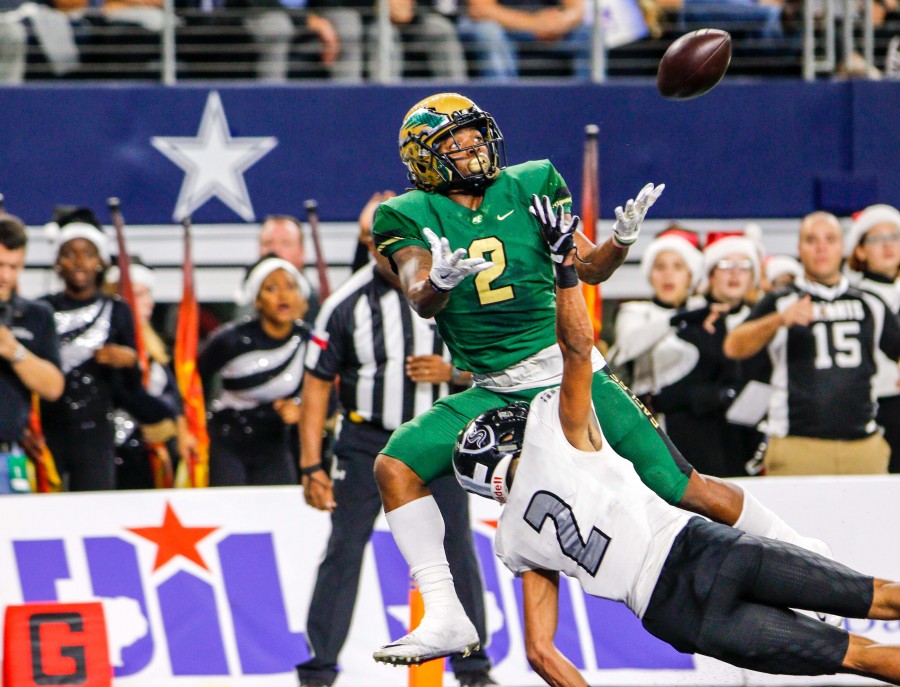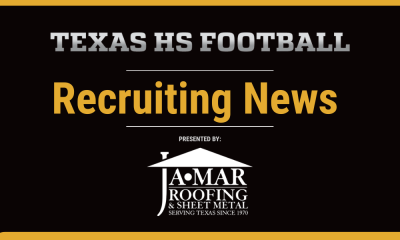
A great Wide Receiver makes getting open appear to be an easy task when in actuality it takes a lot of work on the field and in meetings to understand and master. Learning the concept of defenses, the offensive play being run, alignment, stance, start, attitude, stem, and break are all the things that must go into getting open on any particular play. Let’s take a look at these coaching points as it applies to ‘getting open’ for a Wide Receiver.
Understanding defensive coverages
The first thing that a Wide Receiver learns is how to identify a defensive coverage. Knowing how many safeties are deep and how the Corners are playing the outside Wide Receivers’ are the two easiest indicators in identifying a defense. Once a Wide Receiver can identify a Coverage pre-snap (before the ball is snapped) he must then learn where on the field each defender is responsible for in a zone coverage (corners usually line up outside of the outside Wide Receiver in zone). This will allow the Wide Receiver to know where the open areas of the field should be based off of the offensive play that was called.
Learning the concept of the offensive plays
What was the offensive play call? The most important aspect of this coaching point is to understand the entire concept of the play and not just what route that Wide Receiver is running (a common mistake among young coaches and players). This allows for the Wide Receiver to understand fully what is trying to be accomplished with the play vs. that particular coverage. Are we flooding a zone, high-lowing a defender, or are we trying to create a 1 on 1 match-up? All are different ways to attack a defense and there are different plays for each vs. each different coverage. As you might have guessed, there are times when a Wide Receiver should be the guy getting open to get the ball, and other times with the same play that his route is going to open someone else up based on the coverage being played.
Pre-snap alignment
Once a Wide Receiver is able to recognize and ID a defensive coverage pre-snap and understand the concept of the offensive play the next step is to know where to line up.
Widening out towards the numbers on the field or cutting down his split towards the ball can give a Wide Receiver more room to work with based on the route he is supposed to run. Typically for an “in” breaking route the Wide Receiver will widen his split out a little bit.
Conversely, for an “out” breaking route he will cut his split down a bit.
Stance and Start
A Wide Receiver stance can and will determine whether or not he will get open on his route, particularly vs. a press man coverage defender. He needs to be low in his stance, hands ready (arms bent at elbows), head up, and be able to use his hands to get a release when the ball is snapped and the defender tries to jam him up and keep him from getting off the line of scrimmage. If a Wide Receiver comes off the ball too high in this situation he will be most likely put on his back or worse yet, driven out of bounds. Using a false-step or hint move in the opposite direction at the start can sometimes create just enough separation to get a clean release on a defender. Too many steps at the beginning of route will throw timing off and disrupt the play.
Attitude
Attitude, especially at the start of a route is an often overlooked coaching point of getting open. When a Wide Receiver thinks he is going to be beat off the line of scrimmage, he will. Having a swagger or confidence about oneself goes a long way in being able to get off the ball and having a clean release. Against man press coverage, it becomes an attitude almost as much as having and using proper technique.
Stem
The stem, or way in which a Wide Receiver attacks a defender while running his route is probably the most important aspect of getting open. Let’s use an inside Wide Receiver running a Corner route as our example. This route is a very good one vs. a Cover 2 look. There will be two high safeties in this coverage, each with the responsibility of covering a deep half of the field. When the Wide Receiver starts his route, he must “lean” or stem his route towards where the Safety is to try and keep him from moving as long as possible to allow for the Corner route to come open once the break is made.
Failure to stem or lean on the Safety will not create the space necessary to get open. Another important consideration for a Wide Receiver is to know whether he needs to try and get an inside or outside release based on the route he is running. Failure to get the proper release will cause timing and spacing problems.
Break
For a Wide Receiver running a route that requires him to change direction, he must master the body control necessary to do so. Most importantly, a Wide Receiver must be able to lower his center of gravity when getting in and out of a break. Lowering oneself allows the change of direction to occur faster and help prevent the “rounding” of the route. Shortening his steps also helps to get his body under control to allow for the change of direction. A few other tricks of the trade for a Wide Receiver include:
-Swinging the arms faster as they slow down to give the illusion of going faster not slower.
-Giving a head fake gives the illusion of going in the opposite direction.
– “Weaving” on the stem also can help (Ex., starting inwards, then outwards, then back in right before the break).
Lastly, making sure that the Wide Receiver keeps his feet underneath him while making his break will keep the defender guessing as long as possible as to which direction the Wide Receiver will be going (kicking a foot out to help change direction is a serious indicator for a defender which way the Wide Receiver will be breaking towards).
Brought to you by:
www.JaMaRoofing.com


















